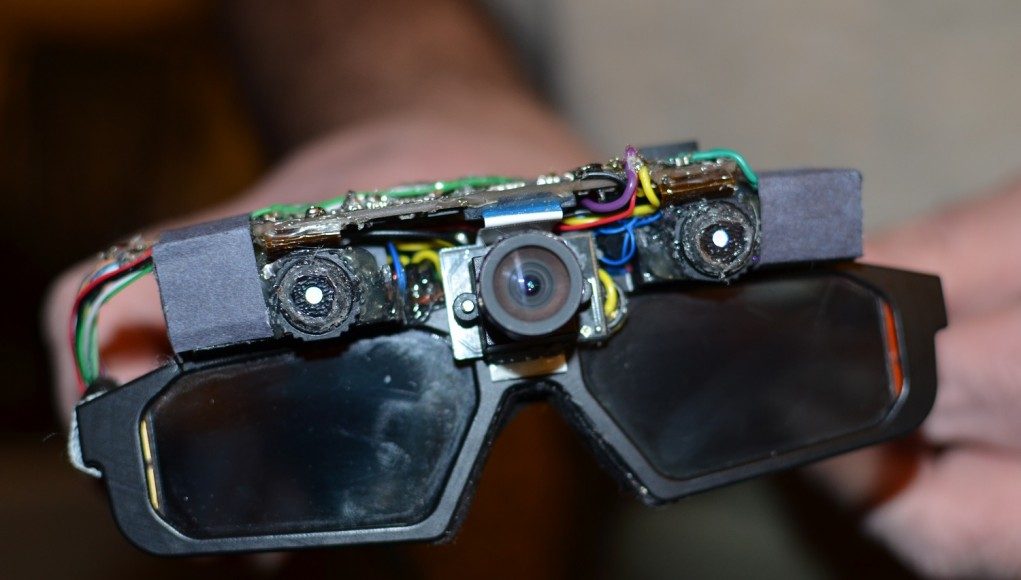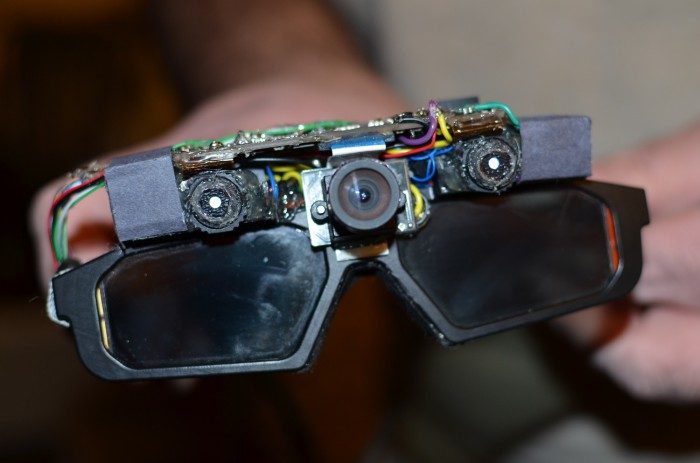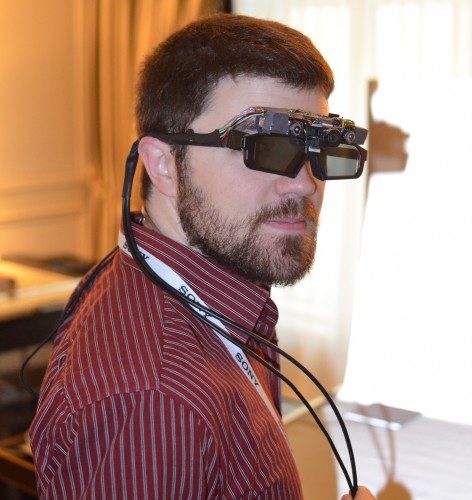CastAR, the unique AR/VR gaming headset coming from Technical Illusions, made an appearance behind closed doors at CES 2014. Road to VR is the first to go hands-on with the latest HD prototype.
Paul and I were in for some luck this morning when we met up with Jeri Ellsworth and Rick Johnson, the founders of Technical Illusions. Not only was it our first opportunity to try CastAR for ourselves, but we got to do so on their freshly minted 3 day old prototype—the first to use new HD projectors with a resolution of 1280×720.
The system uses dual projectors mounted atop glasses to project images onto a retro-reflective surface in stereoscopic 3D. Each projected image is unique to the viewer, meaning multiple players can use the same surface to project either a completely different holographic style image or a different view of the same game to other players also using CastAR.
The new HD version uses dual 720p projectors delivering a higher quality image than earlier prototypes; after switching from the SD version to HD the difference was stark and impressive. The illusion of imagery rising up out of the reflective surface was compelling and vivid.
CastAR’s proprietary LED-based head tracking system is based around IR LEDs mounted on a plate appearing somewhere in the viewer’s field-of-view (FOV) tracked by a camera mounted in the glasses. Moving your head around while in each demo gave a completely new perspective on the world. In one demo, looking down into the game surface revealed a deep pit with glowing lava at the bottom.
The system is fairly fast and responsive, with excellent coverage given that it’s only using a single tracking LED. An example of its reliability: when I ducked lower and lower towards the level of the desk, the system tracked accurately right until my head was under the surface. Impressive stuff. We were told that the HD prototype has not yet been optimized for latency.
CastAR also features a VR clip-on to turn the AR system into an immersive VR platform. Ellsworth told us that the current prototype of the VR clip was still only designed for one eye and not quite ready for show.
This was our first time trying CastAR, and as a backer myself, I was extremely pleased with what I saw—not to mention, it was a reassuring moment for my investment.
Ellsworth and Johnson tell us that they still have several iterations to go before locking everything down for the final deliverable version (such a shame, the exposed circuit board look is really quite fashionable).
We’ll have a much more detailed write-up of our time with CastAR plus a video playtest and video interview with both Rick and Jeri very soon. Stay tuned!









